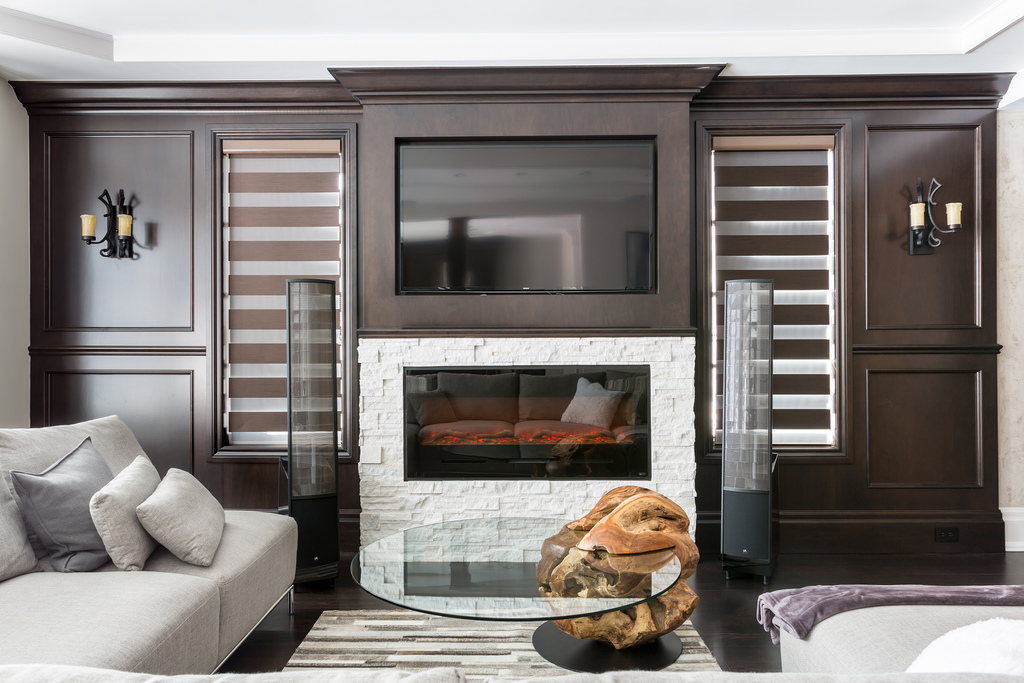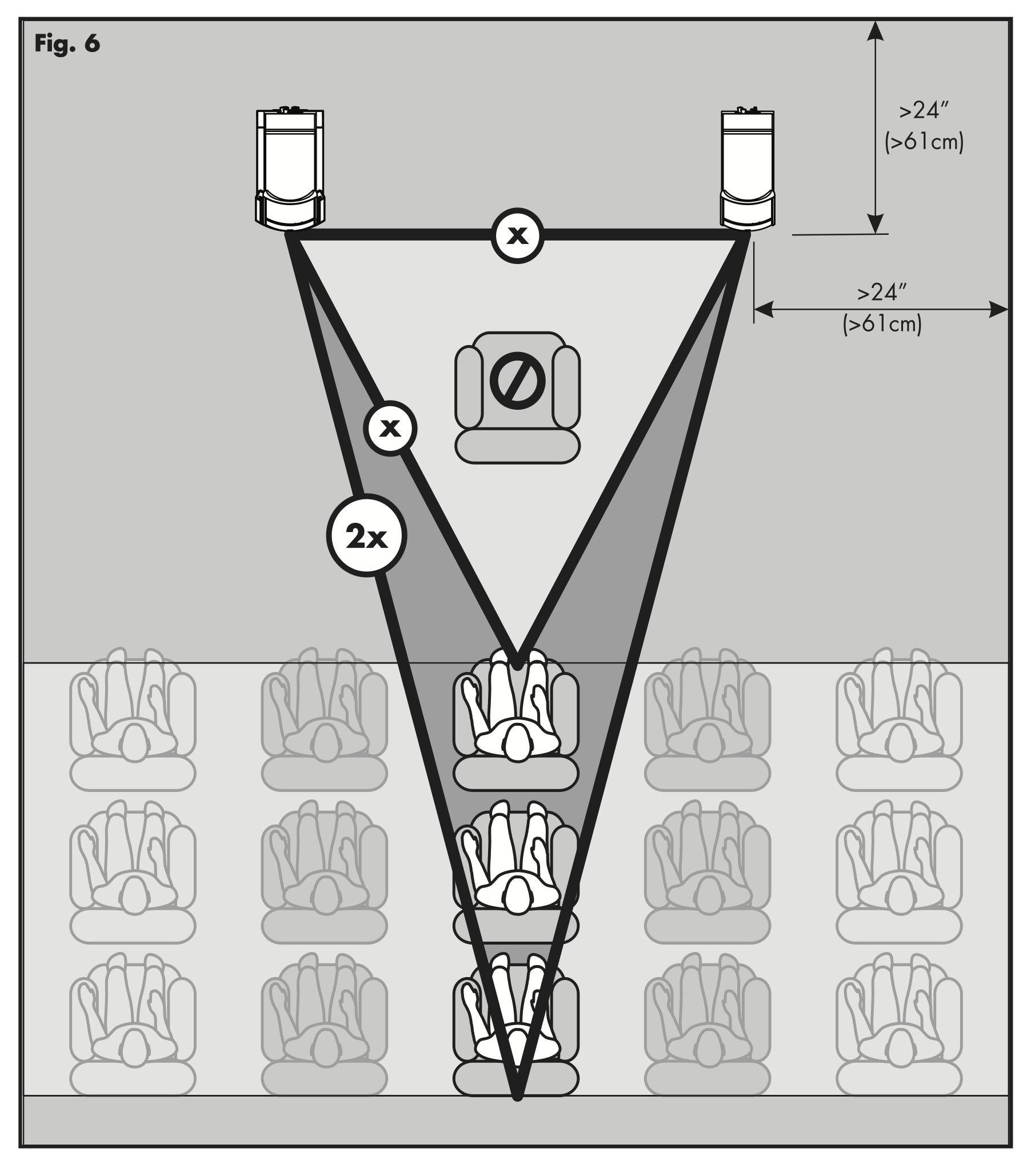A completely different speaker like the Martin Logan Electromotion ESL X, can do something many other speakers cannot. And if you accept some compromises, you can get a sound quality with some absolutely magnificent features.
When it succeeds as well as here, you get both powerful bass and crystal clear sound, but it requires some slightly unorthodox solutions.
The somewhat unusual speaker construction fits into a long line of hybrid speakers from Martin Logan. They have long made speakers with two completely different technical solutions, and have almost perfected the combination of conventional bass elements, with electrostatic elements – called XStat.
It is a more expensive and more complicated solution than the traditional solution of combining a dynamic bass element with a cone diaphragm, coil and magnet, with a small cap-shaped treble element – in a box.
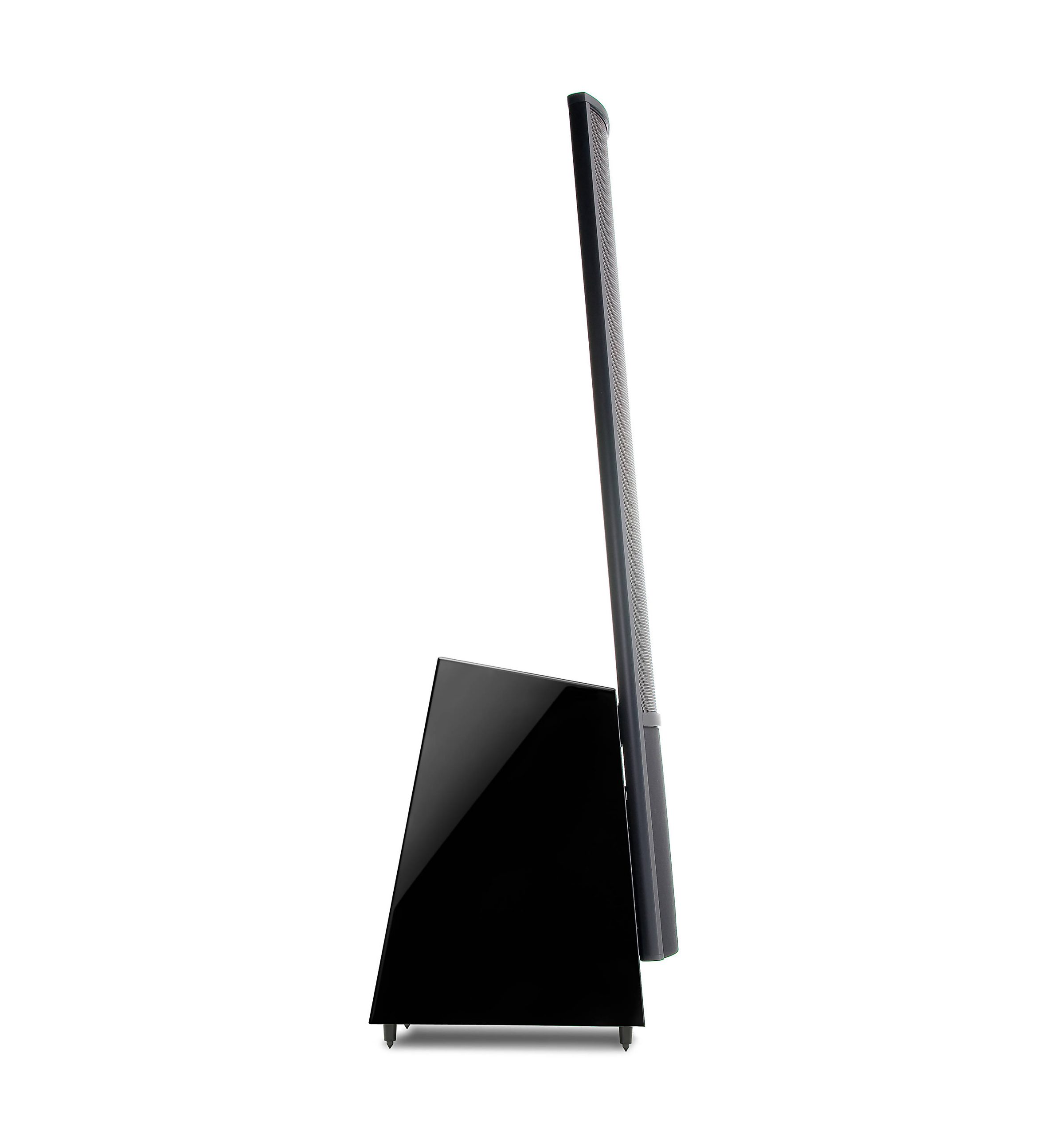
The marriage between fairly common bass elements and a transparent electrostatic membrane, combines the best of both worlds, and creates a dynamic, focused and open sound that is rare in this price range.
The transparent electrostatic membrane is a conductive film that is so light that it must be clamped in a vertical, curved frame, so that it does not blow off when the current sets the membrane in motion.
In the cabinet that the frame is screwed into, there are two powerful 20 cm bass elements – one at the front and one at the back – and the bass cabinet acts as the speaker’s subwoofer. Which covers the frequency range from 41 to 400 Hz. The rest of the music comes from the 101.6 cm long and 21.8 cm wide – XStat electrostatic membrane.
The challenge is to get the four bass elements together to react as quickly as the transparent electrostat. Since the thin film has so much lower mass than the bass membranes – which will also pull on a voice coil, Martin Logan has worked for a long time to develop an efficient crossover filter with, among other things, capacitors in polyester film and steel-laminated inductors.
Only one subpoint
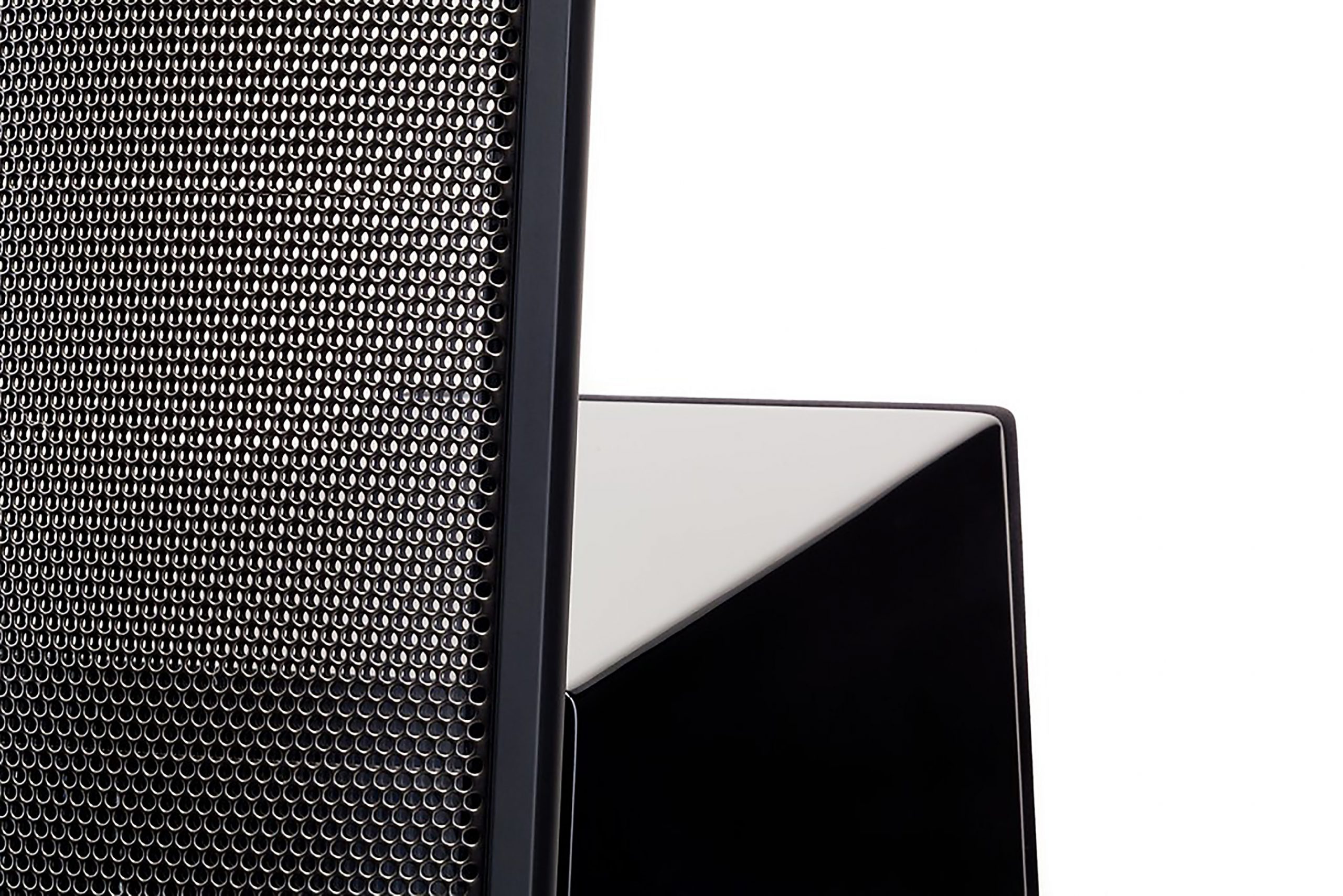
The two bass elements are mounted back to back in a bass reflex cabinet with the door at the bottom, and divided as far down as the electrostatic element allows. The rear element is tuned to play from 100 and down, while the front is split at 400 Hz.
A larger electrostatic membrane – like the one in the Martin Logan Impression ESL 11A, has greater bandwidth because the surface is larger, and in an ESL 11A, the crossover frequency can be lowered to 300 Hz.
While the ESL 11A has active basses (built-in bass amplifier) and room correction, the ESL X is a passive speaker. The electrostatic membrane requires power, which it receives from two small 15 V transformers, otherwise the connections here are quite conventional, with proper cable terminals for bi-wiring / bi-amping.
Alternatives
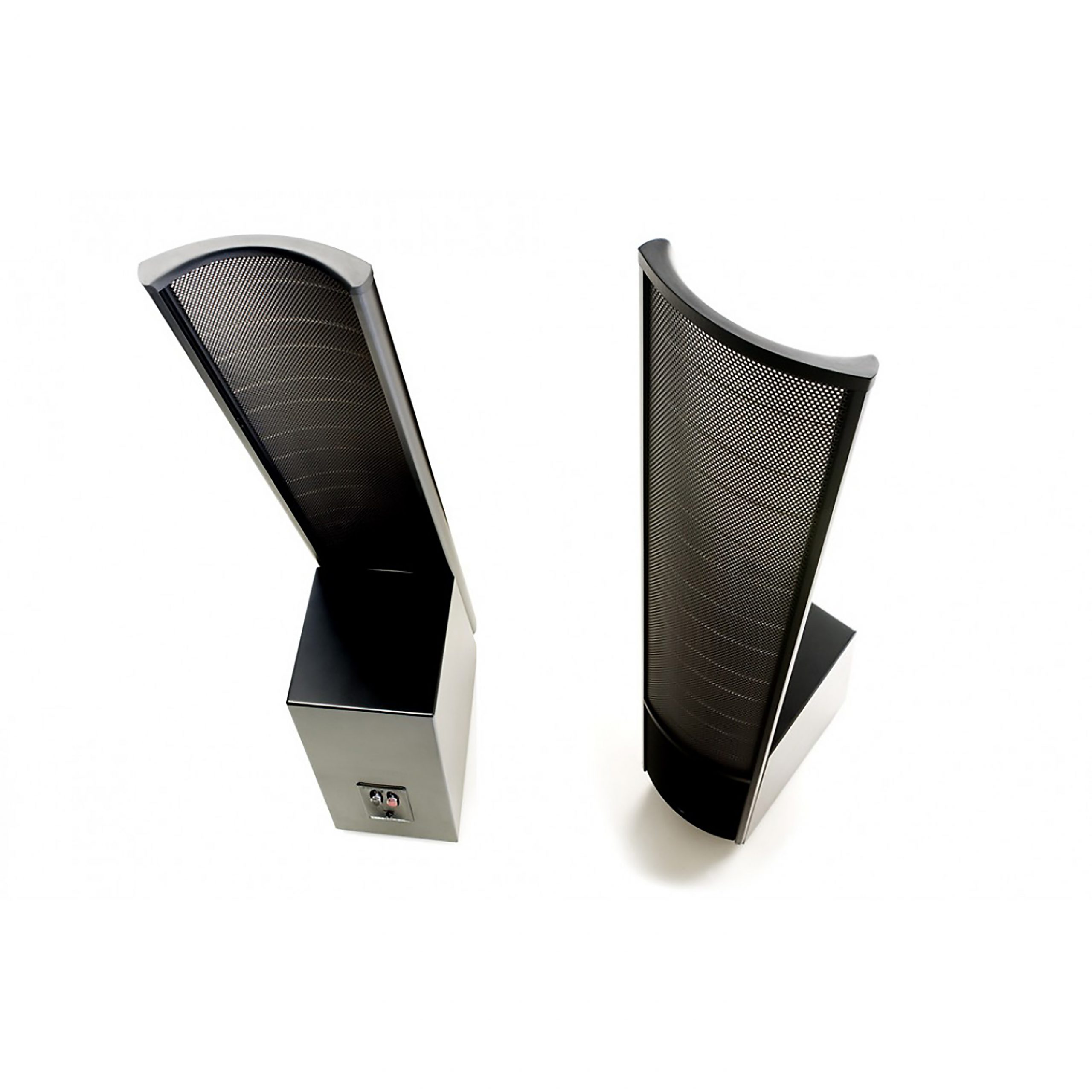
There are not many similar speakers in this class. The slightly smaller and 2,000 cheaper Electromotion ESL (without X), is the only alternative among hybrid speakers. Among the conventional speakers, the retro cool JBL L100 Classic is perhaps an alternative. The very successful KEF R11 is another, and Sonus fabers Sonetto series a third.
They all have their clear qualities, but none of them have the super-neutral midrange and lightning-fast transient response of the Martin Logan speaker.
Placement
ESL X are 150 cm high, 24 cm wide and the bass box extends 53 cm backwards, but they can be placed close to the rear wall. The transparent electrostatic membrane is a design bonus, since you can see the back wall through the speakers. Thus, the speakers do not seem so towering in the room.
Since the electrostat is open at the front and rear, the sound waves also radiate backwards. In order for the timing to be as optimal as possible, it is important that the distance from the speakers to the back wall is the same for the right and left speakers.
Under the base cabinets are rubberized feet, where the rubber cap can be removed, if you prefer to use the studs for better stability on a carpet floor.
Martin Logan’s user manuals are among the best, and describe well why they recommend angling the speakers towards the center of the sofa. Then you get the next sonic balance, and you avoid unwanted reflections from side walls.
Devialet Configurator
Our test pair was used with various amplifiers, from the new Hegel H120 to Rotel’s new high-end amplifier set in the Michi series. They were also tested on the Devialet Expert Pro 220, which has speaker-adapted digital processing. Where you adjust for timing in the frequency between the right and left speakers, the bass elements’ oscillating coils protect against overload, and correct the bass response.
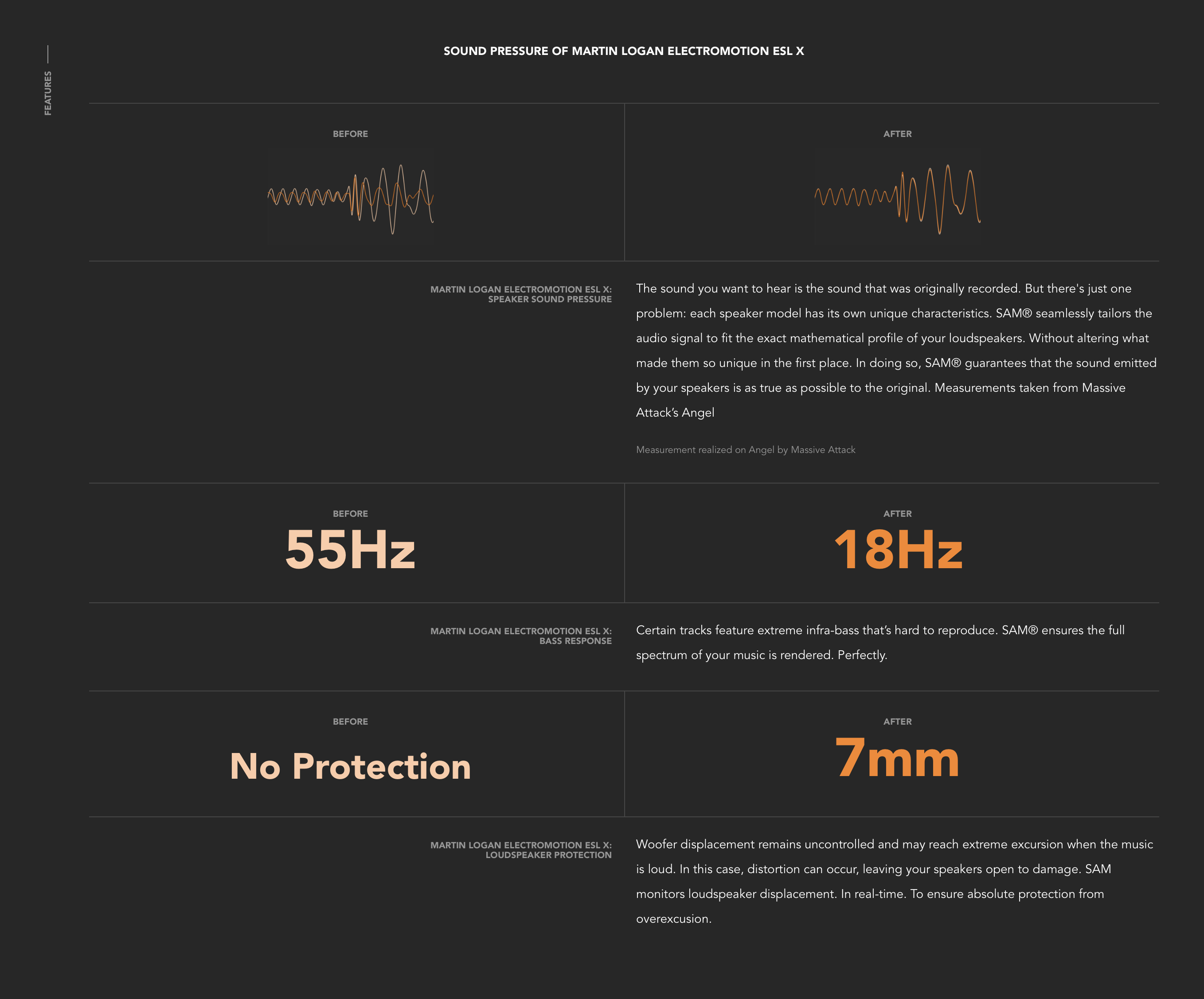
SAM calls Devialet the technique, and although the speakers play well on all good amplifiers, an Expert Pro with SAM will tighten the focus a little, and give the bass a little better range.
Whichever amplifier you prefer, it is a point to point out that the speaker’s impedance of six ohms is not constant. It changes with frequency and drops to 1.6 ohms at 20 kHz. This can present problems for low-voltage amplifiers with moderate attenuation and some tube amplifiers.
Lightning fast dynamics
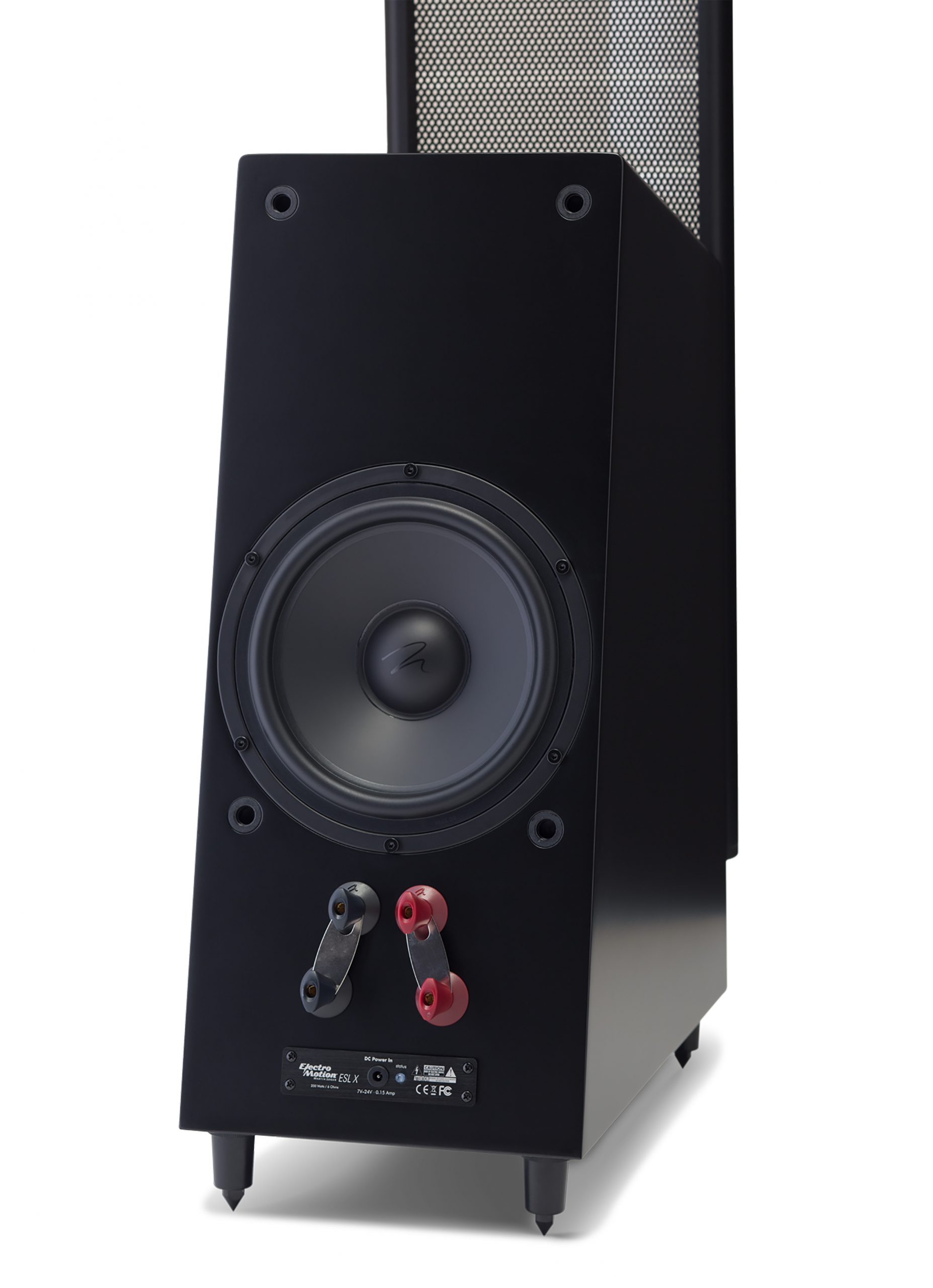
After a recipe-based placement in the test room and a few days of recording, it was time for another deep dive into the qualities of the hybrid speaker.
But let’s take the shortcomings first.
The speaker has noticeably more powerful and dynamic bass reproduction than Electromotion ESL, and although they play a little louder, they do not reach the same volume as a pair of KEF R11 or Audiovector R3 Arreté. If you love bold bass and loud music, this is hardly the speaker to choose.
The electrostat has only a 30 degree horizontal spread of sound waves, so they must be angled inwards to lift the treble into place in the sound image. But it also means that the optimal listening position is somewhat limited. Two or three pieces can sit together and listen, but only the one in the middle will get the balance in the sound perfectly reproduced.
When everything is clapping, amplifying, positioning, music and you feel obvious for musical entertainment, there are few speakers that can match the crystal clear sound from an electrostat.
On Khalid’s Better, you can feel the bass well in the diaphragm, and the vocals are perfectly focused in the middle of the soundscape. If you change to Mirella Frenis’ soprano at Puccini’s La Boheme, you immediately notice how wonderfully uncoloured the sound is. The vocals are so sharp that it can be used as a knife, but never uncomfortable.
The treble response of the speakers can be said to be relaxed in the upper octaves, and this may be the reason why you rarely feel discomfort when playing opera as loud as it should be played.
It is almost impossible to find distortion at normal listening volume. Keith Jarrett’s trio cast on Inside Out, or Pat Metheny’s live recording of Are You Going With Me, sounds crystal clear and clean. The four bass elements together play tight and powerful, while the open and transparent reproduction of the electrostat, gives the piano sound a wealth of timbre and details.
The more expensive R3 Arreté is even more resolved and detailed, but not quite as neutral in the midrange. The perspective is rock solid and the soundscape convincingly deep, and the ability to create the coveted holography in the space between speakers and listener is unique and something you often only experience with a successful electrostatic design.
Conclusion
Martin Logan’s Electromotion ESL X, has perhaps the most natural and colorless midrange reproduction of any speaker in this class. It also has lightning-fast dynamics and very generous bass reproduction. Other speakers play louder, but few play so crystal clear, clean and focused – and if you pair the speakers with a really good amplifier, the stage is set for some music experiences that conventional speakers will struggle to match.

We think
Lightning-fast dynamics, open, detailed and transparent sound image with crystal clear midrange. Limited with sound pressure and deep bass.
5650 €
Specifications
- Type: Two-way hybrid floor-standing speaker
- Bass: 2 x 20 cm
- Midrange / treble: 102 x 22 cm electrostatic element
- Power resistance: 400w
- Entrance: Double par
- Sensitivity: 91 dB / 6 ohms
- Frequency response: 41Hz –22kHz ± 3 dB
- Dimensions / weight: 150.3 x 23.8 x 52.6 cm / 23.6 kg
- Other: Black lacquer
- Web: martinlogan.com
